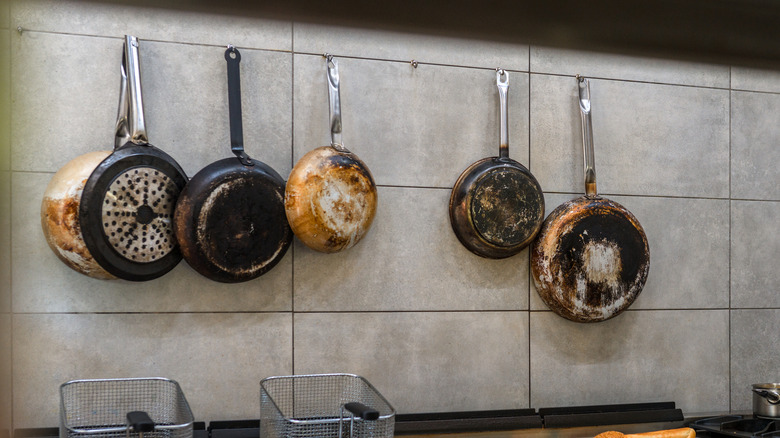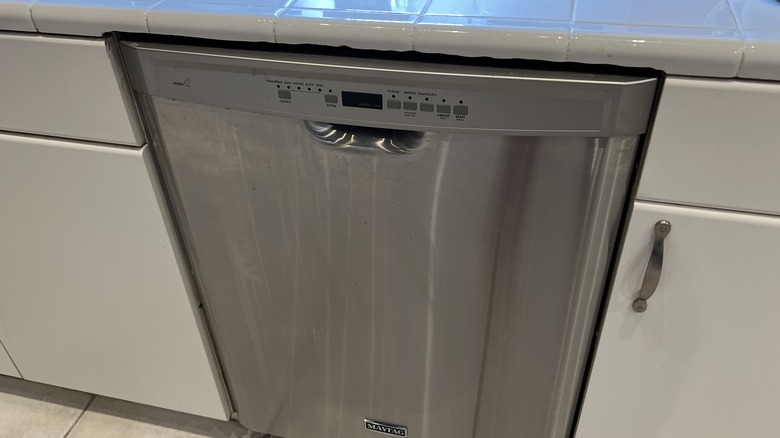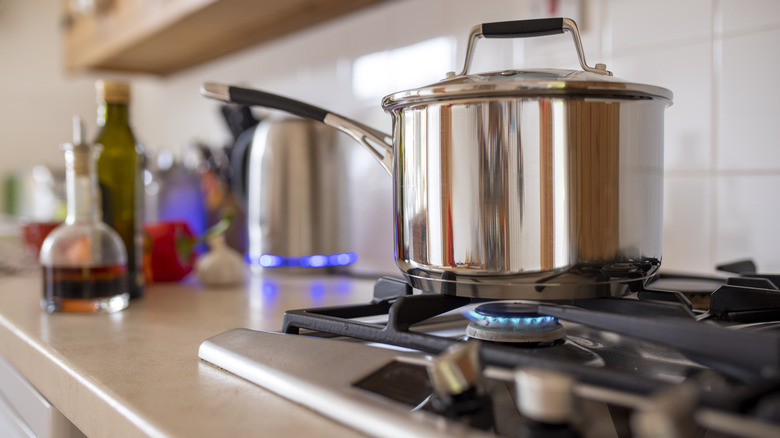Easily Remove Rust From Stainless Steel Surfaces With These Two Ingredients
Humankind has greatly benefitted from the millennia-old discovery of iron. However, its ability to rust has made it a difficult metal to deal with. Through innovation, we saw the birth of stainless steel, which is an alloy of iron and chromium. Before long, this unique metal became the go-to choice for cookware and appliances. This was because the addition of chromium gave it a protective coating to prevent its contact with air and moisture — the two major reasons for the creation of rust.
Yet, despite this chromium coating, rust can still corrode stainless steel in certain cases. You could easily remove these rust stains with the popular household staple WD-40, or to make your life even easier, you could follow this tip to remove rust from stainless steel surfaces with just two ingredients: baking soda and lemon juice. Both of these items are mildly abrasive and work to remove the rust without causing any erosion or serious harm to your stainless steel products.
Why does stainless steel rust in the first place?
Stainless steel is considered a low-maintenance metal because of its resistance to rust. Yet in certain conditions, it actually can rust. These conditions include exposure to damaging chemicals, moisture, or heat for extended periods of time, and also if the object in question comes in contact with saline materials or grease. Ultimately, what determines the likelihood of corrosion is the amount of chromium present in the stainless steel. If it is on the higher side, the chances of corrosion are fewer, while if it's on the lower side, the chances of rusting increase.
Once you're aware of the fact that rust can develop on metal when iron comes in contact with oxygen and moisture, you will be able to deal with it better, especially if you catch the formation of rust at an early stage. Before you start working to remove the rust, however, you should consult the product's manual to see if the method you are planning to employ won't harm the product. Valuable or antique products deserve expert guidance before being dealt with at home. While removing the rust, you should also protect the surface on which you are removing the rust by spreading a cloth there first.
How to remove rust with lemon and baking soda
Coming to the nifty little trick of using lemon and baking soda to remove rust stains from stainless steel, the first thing to note is that this trick works best on items with moderate rust stains. This method is one that has been used in households for a long time and is known to show good results. For this trick, all you need to do is to mix lemon juice and baking soda in an equal amount till the mixture forms a thick paste.
The amount you use can be determined by the amount of solution you need for the rusted area you're targeting. Once the paste is ready, spread it around the rusted area and leave it on for at least 30 minutes. If you feel the paste is beginning to become thick because the lemon juice is drying out, you can spray some water on the mixture. After this, you can scrub the mixture away with a damp sponge, and watch the rust disappear.
In some cases, one application of this mixture may not be enough to remove all the rust stains completely, so you can repeat the process. Lime juice or hydrogen peroxide can also be used instead of lemon juice in case that isn't available.



